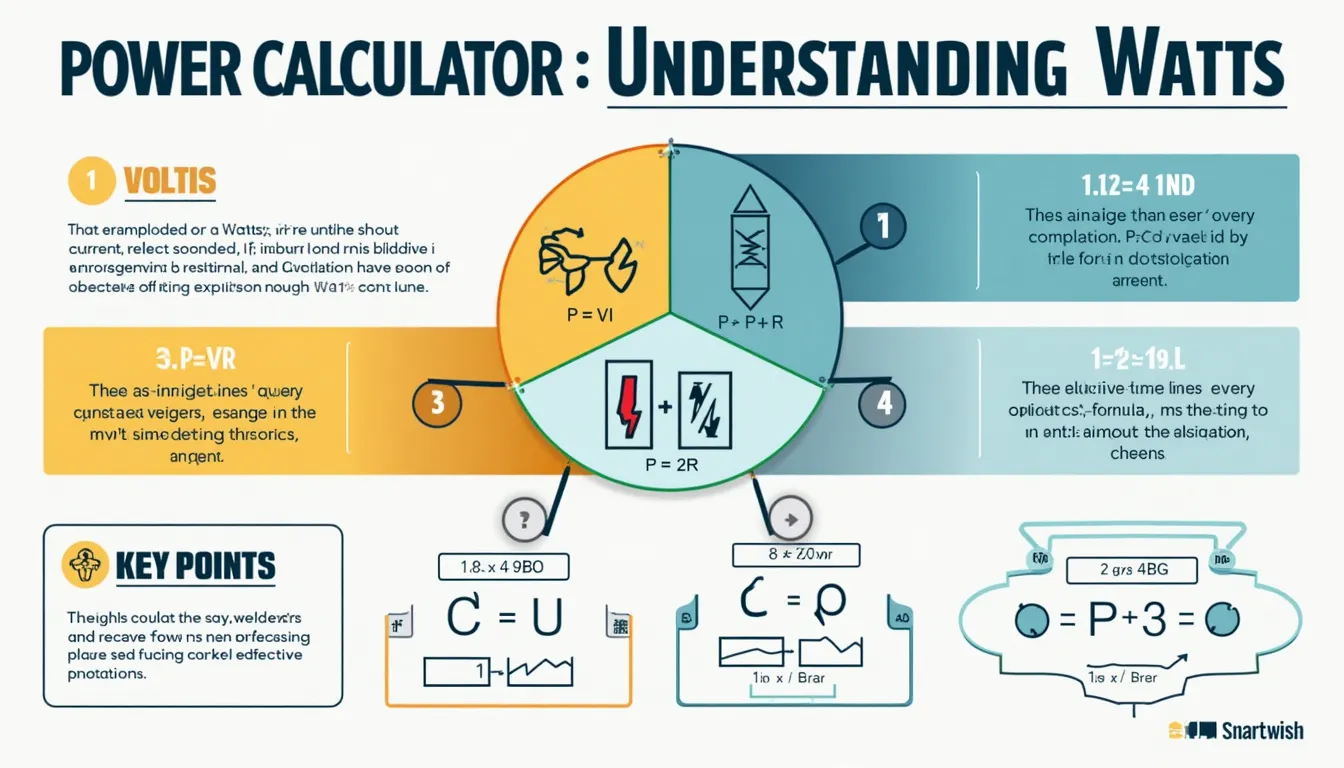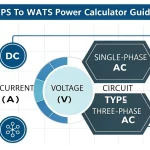Is this tool helpful?
How to use the tool
- Select the known pair. Choose “Voltage & Current”, “Current & Resistance”, or “Voltage & Resistance”.
- Type your values.
• Example 1: Voltage = 120 V, Current = 2.5 A
• Example 2: Resistance = 47 Ω, Current = 1.2 A - Pick units. Options cover V, mV, kV, A, mA, Ω, kΩ.
- Hit “Calculate Power”. The result appears instantly in watts.
Formulas used
$$P = V \times I \qquad P = I^{2} \times R \qquad P = rac{V^{2}}{R}$$
Worked examples
- Voltage & Current. 120 V × 2.5 A = 300 W.
- Current & Resistance. (1.2 A)2 × 47 Ω = 67.68 W.
- Voltage & Resistance. 24 V across 12 Ω:
$$P = rac{24^{2}}{12} = 48 \text{ W}$$
Quick-Facts
- Standard U.S. outlet voltage: 120 V ± 5 % (NEC 2023, https://www.nfpa.org/).
- IEC safety limit for handheld tools: 240 V rms (IEC 60745-1).
- Power = Energy ÷ Time; 1 kWh costs ≈ $0.15 in the U.S. (EIA 2023, https://www.eia.gov/).
- Typical LED bulb draws 9 W to produce 800 lm (DOE Lighting Facts, https://www.energy.gov/).
FAQ
What is electrical power?
Electrical power is the rate of energy transfer in a circuit, measured in watts (W) (IEC 60050).
Which unit conversions occur automatically?
The tool converts mV→V, kV→V, mA→A, and kΩ→Ω before applying formulas.
Can I use it for AC circuits?
You can calculate apparent power; add a power factor to obtain real power (IEEE Std 1459-2010).
Does it support three-phase systems?
No. Three-phase power needs √3 multipliers and line-to-line values (IEC 60038).
How do I find energy from the result?
Convert watts to kilowatts and multiply by hours. Example: 300 W × 4 h = 1.2 kWh.
What accuracy can I expect?
Outputs follow double-precision JavaScript math; rounding to 0.01 W.
Is unit entry case-sensitive?
No. The dropdown normalizes units internally.
Why isn’t my calculation working?
Ensure you filled exactly two fields and used numeric input; blank or three entries trigger an error.
Important Disclaimer
The calculations, results, and content provided by our tools are not guaranteed to be accurate, complete, or reliable. Users are responsible for verifying and interpreting the results. Our content and tools may contain errors, biases, or inconsistencies. Do not enter personal data, sensitive information, or personally identifiable information in our web forms or tools. Such data entry violates our terms of service and may result in unauthorized disclosure to third parties. We reserve the right to save inputs and outputs from our tools for the purposes of error debugging, bias identification, and performance improvement. External companies providing AI models used in our tools may also save and process data in accordance with their own policies. By using our tools, you consent to this data collection and processing. We reserve the right to limit the usage of our tools based on current usability factors.







